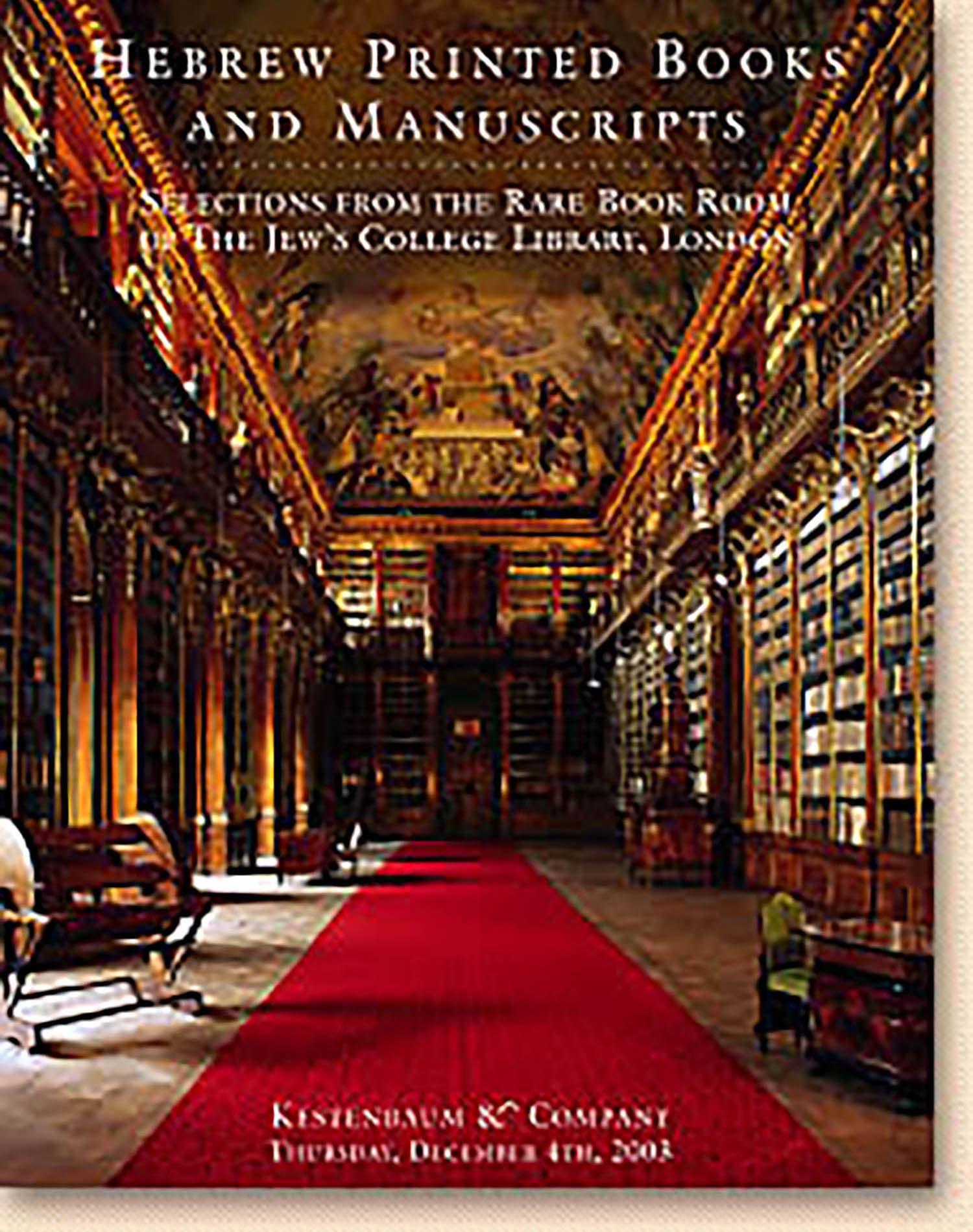al-Harizi, Judah ben Solomon. Tachkemoni.

AUCTION 21 |
Thursday, December 04th,
2003 at 1:00
Kestenbaum & Company Holds Inaugural Auction of Hebrew Printed Books & Manuscripts at Their New Galleries
Lot 201
(POETRY)
al-Harizi, Judah ben Solomon. Tachkemoni.
Constantinople: Solomon and Joseph Yaabetz 1578
Est: $3,000 - $5,000
PRICE REALIZED $2,900
Sepher Tahkemoni is al-Harizi’s major work of poetry, completed after 1220, during the poet’s travels abroad.
Judah ben Solomon al-Harizi (1170-1235) was a preeminent poet and translator from Arabic to Hebrew. Born in Spain, al-Harizi traveled extensively in the Middle East. He is most famous for his translations of Maimonides’ works Commentary to the Mishnah and Guide of the Perplexed. He also translated Hunain ibn Ishak’s Adab al-Falasifa (Dicta of the Philosophers) as Musarei ha-Philosophim.
“The most important work of this kind [Maqama] is the collection of humorous pieces by the name of Tahkemoni, an assembly of wise men—the closest approach to the Arabic word, Maqama—written by the poet, Judah al-Harizi” (Waxman, A History of Jewish Literature I, p. 462). Chapter 46 is a travelog that traces al-Harizi’s itinerary from Spain through Provence to Egypt, Syria, and Babylonia. It complements the travels of Benjamin of Tudela fifty years earlier. The focus is on the famous personalities encountered in the various cities along the way. Thus it serves as an invaluable historical document of the period, though highly opinionated and much colored by al-Harizi’s stong likes and dislikes. One blushes when reading that such an eminent personality as Rabbi Meir Halevi (RaMaH) Abulafia of Toledo “is incomprable in wisdom, but haughty, and his haughtiness lowers him” (p. 63a). Other famous personalities discussed include: R. Sheshet of Barcelona, the princes of Narbonne, Kalonymus ha-Nasi of Beaucaire, and Abraham Maimonides of Cairo.
See Waxman, Vol. I, pp. 462-465; EJ, Vol. 2, cols. 627-628; Judith Dishon, “Medieval Panorama in the Book of Tahkemoni,” PAAJR, Vol. LVI (1990), pp. 11-27.
